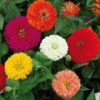**The Chamomile Plant and its Reproduction Process**

**Botanical Overview:**
Chamomile, a member of the Asteraceae family, is a well-known flowering plant cherished for its myriad of medicinal and aromatic properties. This herbaceous plant boasts delicate, daisy-like flowers with prominent yellow centers and white petals. While several species fall under the umbrella of chamomile, the two most prevalent varieties used for their therapeutic benefits are German chamomile (*Matricaria chamomilla*) and Roman chamomile (*Chamaemelum nobile*).
**Natural Habitat and Cultivation:**
Chamomile thrives in temperate regions across Europe, Asia, and North Africa. Its adaptable nature allows it to flourish in diverse environments, from open fields to garden beds. Cultivating chamomile requires well-drained soil, ample sunlight, and moderate watering. It’s commonly grown from seeds or propagated through division.
**Morphological Characteristics:**
The chamomile plant typically reaches heights ranging from 15 to 60 centimeters, depending on species and growing conditions. Its leaves are finely divided and feathery, imparting a fern-like appearance. The flowers, borne atop slender stems, possess a distinct apple-like fragrance and bloom throughout the summer months. Each flowerhead comprises a yellow disk surrounded by numerous white ray florets.
**Reproductive Mechanisms:**
Chamomile employs several reproductive strategies to ensure its propagation and survival. The primary methods include seed production, vegetative propagation, and pollination-mediated reproduction.
**Seed Production:**
Seeds serve as the primary means of reproduction in chamomile plants. The flowering season heralds the formation of small, cylindrical seed heads containing numerous tiny seeds. As the flower heads mature, they gradually turn brown, indicating the ripening of seeds. Once fully matured, the seeds disperse either through natural means, such as wind dispersal, or through human intervention during harvesting.
**Vegetative Propagation:**
Chamomile plants also possess the ability to propagate vegetatively through root division or stem cuttings. Root division involves separating the plant’s root system into distinct sections, each containing viable root structures capable of generating new shoots. Stem cuttings, on the other hand, involve snipping healthy stem segments and planting them in suitable growing mediums until they develop roots and establish themselves as independent plants.
**Pollination and Fertilization:**
The reproductive success of chamomile plants heavily relies on pollinators, predominantly bees and other insects attracted to the plant’s nectar-rich flowers. During pollination, pollen grains from the male reproductive organs (anthers) are transferred to the female reproductive organs (stigma) of the same or another flower, facilitating fertilization. This process culminates in the formation of seeds within the ovary, initiating the next generation of chamomile plants.
**Environmental Influences:**
Various environmental factors, including temperature, humidity, and soil quality, play crucial roles in regulating the reproductive processes of chamomile plants. Optimal conditions promote robust growth, flowering, and seed production, while unfavorable conditions may hinder reproductive success and overall plant health.
**Conclusion:**
The chamomile plant exemplifies nature’s ingenuity in harnessing diverse reproductive mechanisms to ensure its perpetuation. From the intricate beauty of its flowers to the intricacies of seed production and pollination, chamomile captivates not only as a botanical marvel but also as a source of therapeutic and aromatic delights for humanity. Understanding the nuances of its reproductive process offers deeper insight into the remarkable resilience and adaptability of this cherished herb.
**Part 2: Reproduction Process of Chamomile**
**Pollination Mechanisms:**
Pollination in chamomile plants occurs through both self-pollination and cross-pollination, facilitated by various pollinators. Self-pollination involves the transfer of pollen grains from the anthers to the stigma within the same flower. While chamomile flowers possess mechanisms to prevent self-pollination, such as temporal separation of pollen release and stigma receptivity, occasional self-pollination still occurs, contributing to genetic diversity within populations. Cross-pollination, however, is the predominant mode of pollination in chamomile. Bees, butterflies, moths, and other insects are attracted to the bright colors and sweet fragrance of chamomile flowers. As they forage for nectar, they inadvertently transfer pollen grains between flowers, facilitating cross-pollination and enhancing genetic variability.
**Fertilization Process:**
Upon successful pollination, pollen grains adhere to the stigma and germinate, forming pollen tubes that penetrate the style and reach the ovary. Within the ovary, the pollen tubes release male gametes, which fertilize the ovules, leading to the formation of seeds. Fertilization triggers physiological changes within the flower, including the withering of petals and the development of the ovary into a seed-bearing structure.
**Seed Development and Maturation:**
Following fertilization, the ovules within the ovary develop into seeds through a series of developmental stages. The ovary swells as the seeds mature, eventually forming a distinctive seed head composed of numerous individual seeds encased within protective bracts. Seed development is influenced by environmental factors such as temperature, moisture levels, and nutrient availability. Adequate sunlight and water are essential for optimal seed maturation. As the seeds ripen, the seed head gradually changes color from green to brown, signaling readiness for harvest.
**Seed Dispersal:**
Chamomile seeds employ various strategies for dispersal to colonize new habitats and ensure the survival of the species. Natural seed dispersal mechanisms include wind dispersal and animal-mediated dispersal. Mature seed heads release their seeds into the surrounding environment, where they may be carried by wind currents to distant locations. Additionally, animals, birds, and humans inadvertently aid in seed dispersal by transporting seeds adhered to their fur, feathers, or clothing. Human cultivation and harvesting practices also contribute to the dispersal of chamomile seeds, as they are often intentionally sown in new areas for cultivation or herbal use.
**Germination and Seedling Establishment:**
Germination marks the commencement of a new chamomile plant’s life cycle. Under favorable conditions, chamomile seeds germinate, sending out radicles (embryonic roots) that anchor the seedling in the soil. As the seedling emerges from the soil, it develops cotyledons (seed leaves) that provide nourishment until true leaves form and photosynthesis begins. The seedling undergoes rapid growth, branching, and root development, eventually maturing into a fully-fledged chamomile plant capable of flowering and reproduction.
**Environmental Influences on Reproduction:**
The reproductive success of chamomile plants is intricately linked to environmental factors that influence pollination, fertilization, seed development, and seedling establishment. Optimal environmental conditions, including moderate temperatures, adequate moisture, and suitable soil fertility, promote healthy growth and reproductive vigor in chamomile populations. Conversely, adverse conditions such as drought, extreme temperatures, and poor soil quality may hinder reproductive processes, leading to reduced seed production and population decline.
**Conclusion:**
The reproduction process of chamomile is a fascinating interplay of botanical mechanisms and environmental influences that ensure the perpetuation of this beloved herb. From the intricate dance of pollination and fertilization to the dispersal and germination of seeds, each stage of the reproductive cycle contributes to the resilience and adaptability of chamomile plants. Understanding the nuances of chamomile reproduction not only enriches our appreciation for this versatile herb but also underscores the importance of preserving its natural habitats and genetic diversity for future generations.

